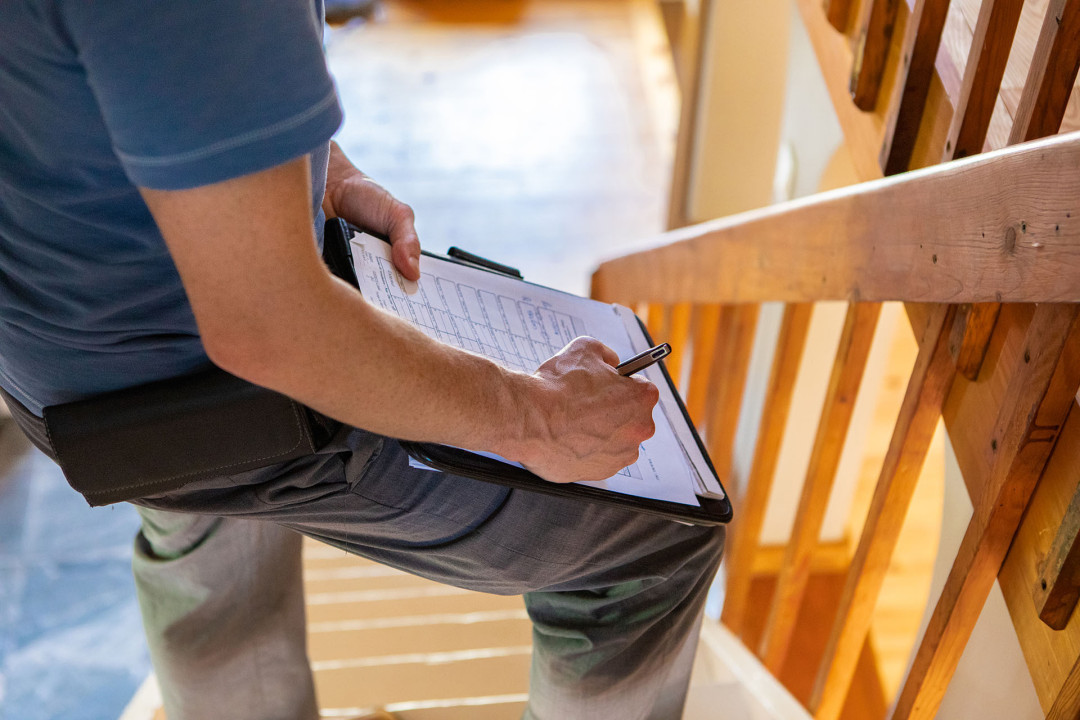The average American spends more than three-quarters of their lives indoors. We go from homes to schools and offices, we visit stores and restaurants, and we travel between those places in enclosed vehicles. With so much time spent indoors, it is surprising that most people think of air pollution as an outdoor problem.
When we talk about air pollution, most people envision clouds of smog, hazy air, and people wearing masks in the streets. But in the U.S., the air indoors is often more polluted than outdoors. We can't control every environment we are in, but we can control our homes. That's why it's important for every homeowner to be aware of their indoor air quality (IAQ) and to take steps to keep their air clean. The first step is to get a baseline with professional indoor air quality testing. Since IAQ significantly affects your health, this isn't a place to try to save money.
What Contributes to Indoor Air Quality
Indoor air quality (IAQ) is a measure of the pollutants in the air of an indoor space. As opposed to outdoor air pollution, indoor air pollution doesn't come from thousands of cars or distant factories. Indoor air pollution includes:
- Radon
- Secondhand Smoke
- Combustion Pollutants
- Volatile Organic Compounds
- Particulate Matter
Radon is a radioactive gas that forms in soil due to the natural breakdown of uranium in soil, rock, and water. It is the second leading cause of lung cancer after tobacco smoke. Radon gas gets into homes through cracks in the foundation or walls that are in contact with the ground.
Secondhand smoke is the most easily prevented indoor pollutants. It can cause or worsen asthma and other respiratory illnesses. According to the EPA, secondhand smoke from burning tobacco products is linked to increased ear infections in children and higher rates of Sudden Infant Death Syndrome (SIDS).
Combustion pollutants are created when some kind of fuel is burned indoors. The most common source of combustion pollutants indoors is improperly vented fuel-burning appliances. These may include water heaters, clothes dryers, fireplaces, wood stoves, gas stoves, and gas-fueled space heaters. Carbone monoxide (CO) is a well-known combustion pollutant, and many homes have CO detectors. Nitrogen dioxide (NO2) is a less well-known pollutant that can cause eye, nose and throat irritation, shortness of breath, and an increased risk of respiratory infection.
Volatile organic compounds (VOCs) evaporate into the air from a wide variety of products used or stored indoors, as well as some building materials. Paints, varnishes, and waxes used in home construction and upholstery can release VOCs. Cleaning products, air fresheners, mothballs, office supplies, and even dry-cleaned clothes can all contribute to VOC pollution indoors.
Particulate matter is the catch-all for non-gas pollutants. It can include dust and pollen from outdoors as well as indoor dust, dust mites, and pet dander. Some homes and other buildings may also suffer from mold, which releases spores into the air that can sicken occupants who inhale them.
Testing Indoor Air Quality
The first step in improving the air quality in your home is having the air quality tested. Rich Johnson, founder of Air Allergen and Mold Testing, warns homeowners that there is currently no real standard for home air quality testing. "Anybody can say anything that they want." That makes choosing your air quality testing company extremely important if you want accurate results.
The most common source of home air quality testing is companies that perform various types of remediation. These are companies whose primary business is removing sources of air pollution, such as mold or asbestos. It is in their interest to find pollutants on their first test and not to find pollutants after their remediation process. That makes these businesses less than 100% reliable.
If you want quality, non-biased air testing, you need a third party that will test your air without a financial stake in the outcome. Air Allergen and Mold Testing is a TrustDALE certified company that provide indoor air quality testing without any financial incentive tied to the results. They can test your home's air quality and make suggestions, but they don't make any money off the process of improving your air quality.
Improving Indoor Air Quality
There are two ways to improve indoor air quality. One is to remove the sources of pollution. The other is to remove the pollution itself. Eliminating sources of pollution is critical. Make sure that gas appliances are well maintained and have no leaks. Don't smoke indoors. Repairs holes and cracks in your foundation or underground walls. VOCs are harder to avoid, but properly storing chemicals (cleaning chemicals, paint thinners, etc.) and avoiding artificial air fresheners can help.
The primary method to remove the pollution itself is to use an air filter on your HVAC system. The quality of available air filters varies widely. Air filtration is measured as a MERV rating, which corresponds to the size of particulate matter the filter can catch. Higher ratings remove smaller particles. Rich Johnson, founder of Air Allergen and Mold Testing, recommends a MERV-10 filter for homes. Most HVAC systems can handle a MERV-10, while higher ratings may put stress on some systems. Johnson recommends a minimum MERV-8. Anything below MERV-8 is not really helping that much.
If you want to know more about your indoor air quality and how to improve it, contact Air Allergen and Mold Testing today.

